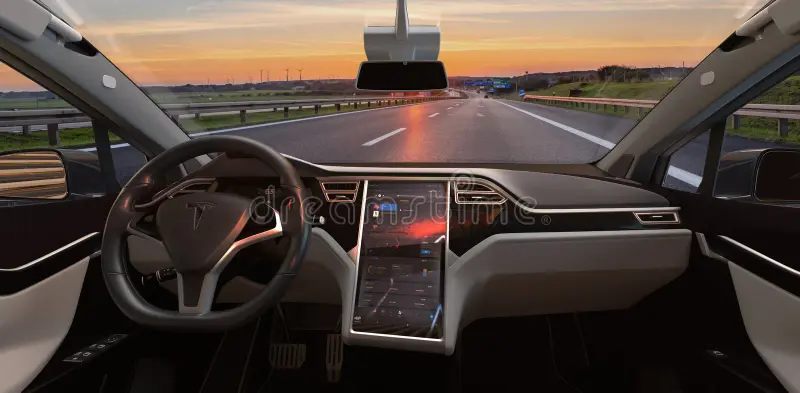In an era where electric vehicles (EVs) are rapidly transforming the landscape of personal transportation, AI-driven EVs are becoming the new frontier. As of 2023, Tesla and Rivian have emerged as pioneers in this field, leveraging artificial intelligence to redefine the future of autonomous mobility. Recent statistics from Bloomberg Green suggest that the global autonomous vehicle market is projected to reach $556 billion by 2026. In this article, we’ll explore how these two trailblazers are leading the charge, the technologies they’re employing, and what this means for the future of mobility.
The Rise of AI in Electric Vehicles
How Tesla is Pioneering Autonomous Driving
Tesla, a household name in the EV industry, has long been at the forefront of integrating artificial intelligence into its vehicles. With its Full Self-Driving (FSD) software, Tesla is pushing the boundaries of what autonomous vehicles can achieve. As of October 2023, Tesla’s FSD beta is available in over 60,000 vehicles across the United States, according to Electrek.
- Neural Networks: Tesla uses advanced neural networks to improve decision-making capabilities. These networks process vast amounts of real-world data—capturing millions of miles driven—to enhance the vehicle’s ability to perceive and react to complex environments.
-
Over-the-Air Updates: A key feature of Tesla’s strategy is its over-the-air software updates. This approach ensures that vehicles consistently improve, allowing owners to benefit from the latest advancements in AI without needing to purchase a new car.
Rivian’s Approach to Smart Mobility
Rivian, though newer to the scene, is making significant strides in the realm of autonomous electric vehicles. Known for its rugged and adventure-ready EVs, Rivian is integrating AI to enhance both safety and functionality.
- Driver+ System: Rivian’s Driver+ is an innovative suite of hands-free driver assistance features. It includes adaptive cruise control and lane-keeping assistance, supported by a network of cameras and sensors. According to InsideEVs, these systems are designed to handle complex driving scenarios, making road trips safer and more enjoyable.
-
Sustainability Focus: Rivian is not just about technology but also sustainability. The company is committed to creating eco-friendly vehicles using AI to optimize battery performance and reduce energy consumption.
Key Technologies Shaping Autonomous Mobility
AI-Powered Sensors and Cameras
Both Tesla and Rivian equip their vehicles with state-of-the-art sensors and cameras, essential for enabling autonomous capabilities. These technologies allow the vehicles to:
- Detect Obstacles: High-resolution cameras and radar systems identify obstacles, pedestrians, and other vehicles, ensuring the EV can navigate safely.
-
Adapt to Traffic Conditions: By analyzing traffic patterns, AI systems can predict and adapt to changes, optimizing routes for efficiency and speed.
Machine Learning and Data Analysis
Machine learning plays a critical role in the evolution of autonomous EVs. By continuously analyzing data:
- Improved Decision-Making: AI systems learn from millions of driving scenarios, refining decision-making processes to handle unexpected events with increasing accuracy.
-
Personalized Driving Experience: These systems can adapt to individual driver habits, providing a more personalized and responsive driving experience.
Practical Tips for Embracing AI-Driven EVs
How to Choose the Right AI-Driven EV
When considering an AI-driven EV, it’s essential to evaluate your needs and preferences. Here are some tips to help you decide:
- Assess Autonomous Features: Compare the autonomous capabilities of different models. For example, Tesla’s FSD offers more advanced features than many competitors.
-
Consider Range and Charging: Look at the vehicle’s range and the availability of charging infrastructure. Tesla’s Supercharger network is extensive, while Rivian is expanding its Adventure Network.
-
Evaluate Safety Features: Check for safety ratings and features. Both Tesla and Rivian are committed to safety, with numerous awards and high safety ratings.
Where to Buy and Charge Your AI-Driven EV
-
Purchase Locations: Tesla and Rivian vehicles are available online and at select showrooms. Rivian also allows for direct-to-consumer sales, offering a streamlined purchasing process.
-
Charging Networks: Tesla owners can rely on the widespread Supercharger network, while Rivian’s Adventure Network is expanding, focusing on remote and scenic locations.
Conclusion: The Future of AI-Driven Mobility
Tesla and Rivian are not merely creating cars; they are crafting the future of transportation. By integrating cutting-edge AI technologies, they are setting new standards for safety, efficiency, and sustainability. As these advancements continue, the road ahead looks promising for both drivers and the environment.
In conclusion, the journey towards fully autonomous EVs is just beginning. Are you ready to embrace this transformative shift in mobility? As AI-driven EVs become more mainstream, the question isn’t if you’ll join the movement, but when. The horizon is bright for those willing to take the leap into the future of autonomous electric vehicles.

